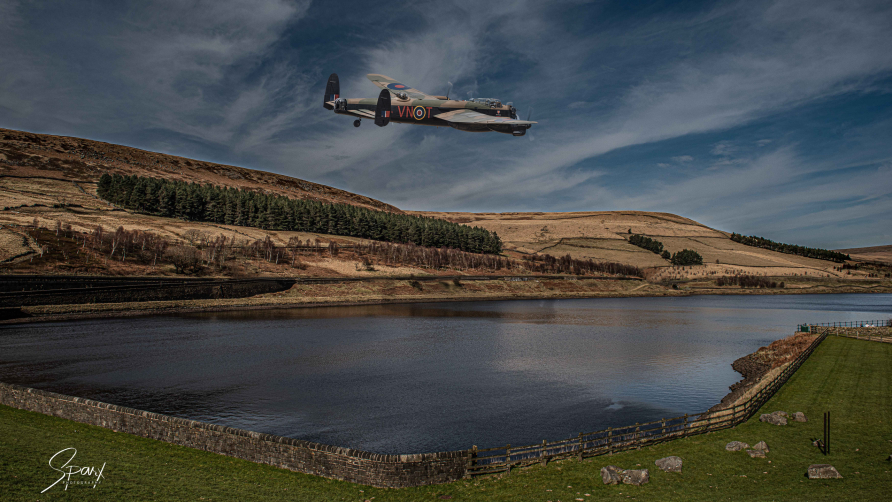The Avro Shackleton was derived from the Avro Lancaster and the Avro Lincoln to fill an RAF requirement for an aircraft to replace the Liberators operating in Coastal Command. The aircraft was originally designated the Avro Lincoln ASR.3, but was redesignated the Avro Type 696 Shackleton.
The Shackleton first flew on 9th March 1949 and was unique at the time in that it was the only British aircraft with contra-rotating propellers, being powered by four Rolls-Royce Griffon engines. The Shackleton had a long and successful service history, serving for 43 years. Shackleton MR.1s Initially equipped 120 Sqn at RAF Kinloss in April 1951, the Shackleton MR.2 had mid-life updates including a ventral ASV radome, whereas the MR.3 had more radical design improvements including a tricycle undercarriage, wingtip tanks, and an altered wing design and shape; the Shackleton was eventually replaced by the Hawker Siddeley Nimrod (a military version of the Comet airliner) with deliveries of the Nimrod commencing in the late 1960s.
The aircraft at Newark Air Museum is WR977 which is a Shackleton MR.3/3 - the MR.3 version was later updated with Armstrong Siddeley Viper turbojets being added to the outer engine nacelles, to give an extra boost to the standard Rolls-Royce Griffon engines. This gave rise to the designation MR.3/3 (MR.3 Phase 3). The MR.3/3 had an operating endurance of about 24 hours which gave the RAF a much enhanced maritime patrol capability. WR977 was built in the late 1950s, and served with nos 220, 201, 206, 203 and 42 Sqns. WR977 retired from service in 1971 and was placed in storage at RAF Finningley (now Doncaster Airport). It was saved from destuction by scrapping by members of the Newark Air Museum, who dismantled the aircraft and transported it by road in May 1977.
The Shackleton first flew on 9th March 1949 and was unique at the time in that it was the only British aircraft with contra-rotating propellers, being powered by four Rolls-Royce Griffon engines. The Shackleton had a long and successful service history, serving for 43 years. Shackleton MR.1s Initially equipped 120 Sqn at RAF Kinloss in April 1951, the Shackleton MR.2 had mid-life updates including a ventral ASV radome, whereas the MR.3 had more radical design improvements including a tricycle undercarriage, wingtip tanks, and an altered wing design and shape; the Shackleton was eventually replaced by the Hawker Siddeley Nimrod (a military version of the Comet airliner) with deliveries of the Nimrod commencing in the late 1960s.
The aircraft at Newark Air Museum is WR977 which is a Shackleton MR.3/3 - the MR.3 version was later updated with Armstrong Siddeley Viper turbojets being added to the outer engine nacelles, to give an extra boost to the standard Rolls-Royce Griffon engines. This gave rise to the designation MR.3/3 (MR.3 Phase 3). The MR.3/3 had an operating endurance of about 24 hours which gave the RAF a much enhanced maritime patrol capability. WR977 was built in the late 1950s, and served with nos 220, 201, 206, 203 and 42 Sqns. WR977 retired from service in 1971 and was placed in storage at RAF Finningley (now Doncaster Airport). It was saved from destuction by scrapping by members of the Newark Air Museum, who dismantled the aircraft and transported it by road in May 1977.
Category: Historic Aircraft
→
Cold War






